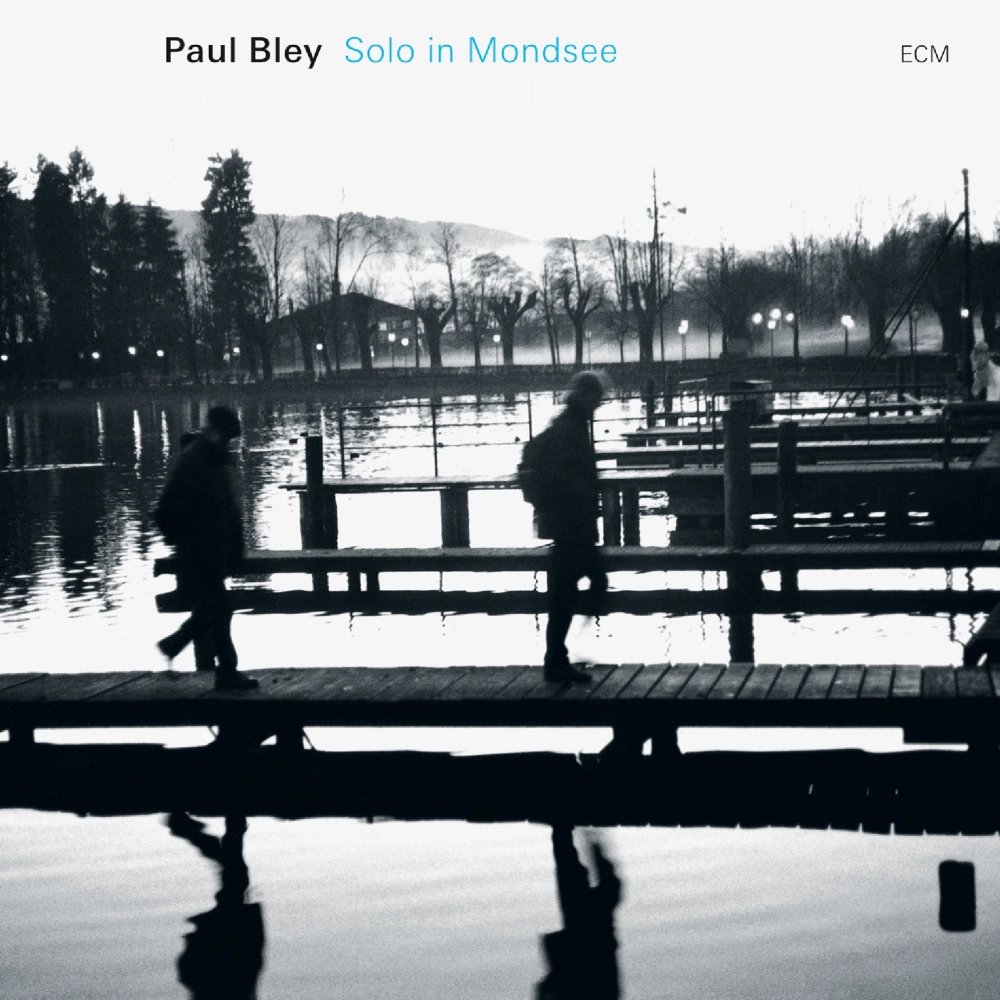Paul Bley, master improviser, alone at a Bösendorfer Imperial piano in Mondsee, Austria. Kaleidoscopically-splintered melodies, distant memories of standards, abstractions of the blues and spontaneous free playing are some of the subjects of the Canadian pianist’s “Mondsee Variations”. This is a resolutely creative and characteristically profound performance from one of the most influential pianists in the entire history of jazz, and Bley’s first solo recording on ECM since the crucial “Open, To Love” album of 1972.
Solo in Mondsee
Paul Bley
- 1Mondsee Variation I
06:36 - 2Mondsee Variation II
05:01 - 3Mondsee Variation III
02:04 - 4Mondsee Variation IV
08:42 - 5Mondsee Variation V
03:40 - 6Mondsee Variation VI
08:09 - 7Mondsee Variation VII
07:36 - 8Mondsee Variation VIII
04:35 - 9Mondsee Variation IX
03:08 - 10Mondsee Variation X
05:41
“Basically, the body of music that exists is like a river meeting a dam – constantly accumulating. Finally it will break through.... The music is inevitable, and it cannot stand still; it never has been able to stand still. It will change, and it will flow, but the seeds of the solution always exist in the music itself.”
Paul Bley in Down Beat, in 1964
Released in time for Paul Bley’s 75th birthday this autumn, “Solo in Mondsee” is the first Bley solo piano album on ECM in 35 years, and may be considered a very belated ‘sequel’ to 1972’s “Open, To Love”. In the interim the Canadian-born pianist has been acknowledged as one of the very great solo improvisers, documenting his unaccompanied playing at many addresses - including his own Improvising Artists Inc (IAI) - and has been featured on ECM with many other projects and ensembles. It was, however, producer Manfred Eicher who first prompted Bley to take the solo route. Bley talks about this in the new book “Horizons Touched: The Music of ECM” (Granta, London, 2007):
“When Manfred called to ask ‘Do you want to make a solo album?’ the idea had never occurred to me. That’s how early it was. The call from ECM coincided with a period when I was trying to be the slowest pianist in the world, which in turn was connected to the work I had just finished with my electronic period: One of the things I liked in electronics was the possibility of long sustains. I demanded, on going back to acoustic music, that the piano itself should be able to duplicate what I’d been able to get electronically.” This was, to large extent, achieved on “Open, To Love”, an album that looked at space, silence and slow tempos, and emphasized the singing interplay of overtones in the decay of struck chords in a way that still seems radical more than three decades later. If an ‘ECM aesthetic’ can be said to exist, that album of slow songs, ‘with raindrops in the right hand’ (as Manfred Eicher once said), provided one of the early blueprints.
That was then. The idea of a new Bley solo album had been raised during sessions for “Not Two, Not One”, the album Paul made with old cohorts Gary Peacock and Paul Motian in a revival of the 1960s Bley Trio: the same line-up that had played on (most of) “Paul Bley with Gary Peacock” (ECM 1003). “Not Two, Not One” recorded at New York’s Avatar in 1998 had been the first of Bley’s ECM discs to feature him on a Bösendorfer piano.
A little later that year, Manfred Eicher recorded András Schiff playing Schubert fantasies on a superb Bösendorfer Imperial Grand in Mondsee, Austria (see ECM New Series 1699), and decided to invite Bley to the same location. It seemed a logical continuation: first the great interpreter, and then the master improviser.
Bley introduces his recital with a thunderclap, striking the bass end of the piano’s harp of strings. Ten pieces of jewelled brilliance follow, with a remarkable turnover of ideas: each of these ‘Mondsee Variations’ is packed with musical surprises, and unexpected changes of direction. “Bley is a genius”, Nat Hentoff wrote in the Village Voice. “There are few pianists in any form of music who so intriguingly interweave the surprises of both beauty and the intellect.” Kaleidoscopically-splintered melodies, distant memories of standards, abstractions of the blues and spontaneous free playing are some of the subjects of these ever-changing tracks which repay repeated listening.
You need to load content from reCAPTCHA to submit the form. Please note that doing so will share data with third-party providers.
More InformationYou need to load content from Turnstile to submit the form. Please note that doing so will share data with third-party providers.
More InformationYou are currently viewing a placeholder content from Facebook. To access the actual content, click the button below. Please note that doing so will share data with third-party providers.
More InformationYou are currently viewing a placeholder content from Instagram. To access the actual content, click the button below. Please note that doing so will share data with third-party providers.
More InformationYou are currently viewing a placeholder content from X. To access the actual content, click the button below. Please note that doing so will share data with third-party providers.
More Information


















